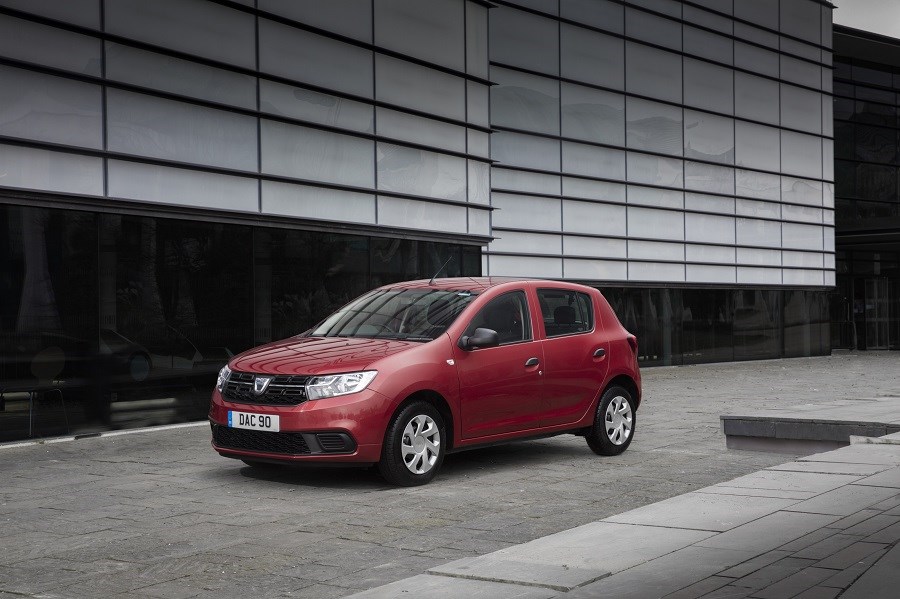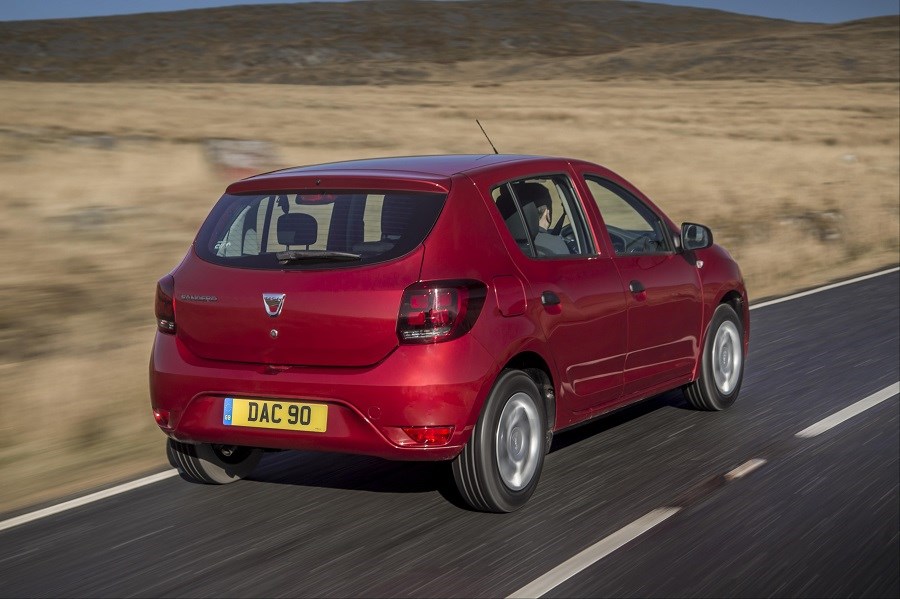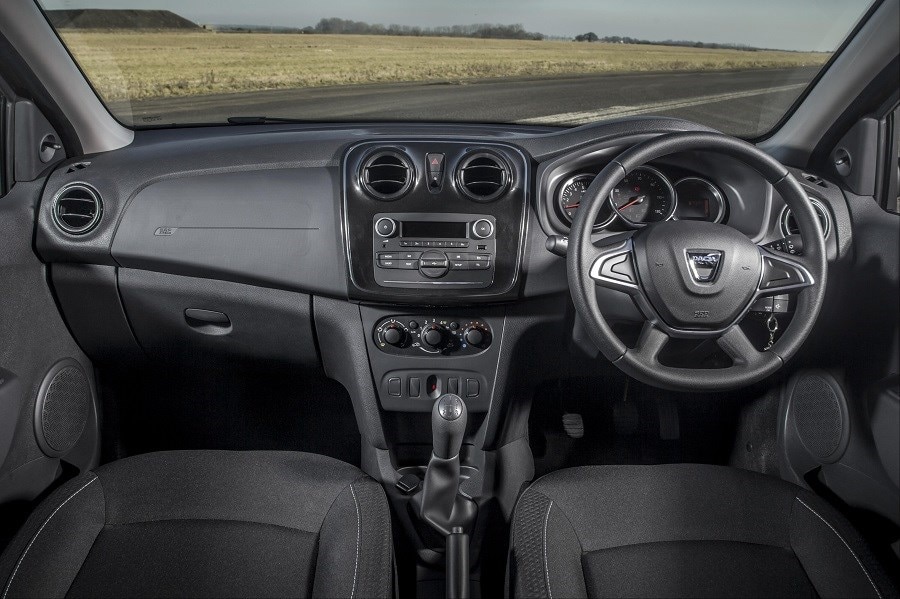Model Review
Dacia is essentially Renault’s budget brand, which has its base in Romania. The French giant hasn’t always owned the manufacturer, although Dacia has flourished ever since it was bought by Groupe Renault.
It’s still a new brand for the UK, with Dacia only arriving officially on UK shores in 2012. It still only markets three models in this country—the Duster crossover, Logan MCV estate and the Sandero hatchback here.
The firm has always majored on value and continues to do so with the Sandero costing a measly £5,995 in 2012 for a brand-new model. Updates and inflation have led to prices rising, although it still holds the title of being the UK’s cheapest new car on sale.
There’s understandably quite a lot of cost-cutting going on here, with the Sandero using components from the old Clio rather than the current model.
Dacia also offers the Sandero in a crossover guise called the Stepway.
Latest model
Dacia revealed a facelifted version of the Sandero at the 2016 Paris Motor Show, alongside an updated Logan MCV.
The manufacturer didn’t go over the top, but styling differences such as a new grille and LED daytime running lights helped to keep the Sandero looking fresh. Other changes made to the model include revised front and rear bumpers, as well as new wheel trims and alloy wheels.
Interior tweaks such as more soft plastics and a redesign of the layout also make the Sandero’s cabin appear more ergonomic than before, although it’s still quite outdated.
The key difference was the introduction of a new engine —a three-cylinder 1.0-litre unit producing 74bhp. This was available with a new automatic transmission, too.
Value for money
If value for money is the main priority on your next car, few cars can offer so much bang for your buck. Starting prices might have risen to £6,995 but that’s still a fantastic bargain for the price. To put it into perspective, a new Ford Fiesta would set you back double that amount.
Admittedly, Sanderos at that price are basic to say the least. Entry-level Access models don’t even come with electric windows, air-conditioning or even a radio, and are sparse to the point where they could be difficult to live with.
It’s not until you get to the top-spec Comfort versions where you get all the standard equipment most buyers are looking for—cruise control, a touchscreen and a trip computer being fitted to these range-topping models.
Used Sanderos start from as little as £3,000 which will buy you a 2013 car in entry-level trim, with around 60,000 miles and the clock. We would recommend increasing this by around £750 to get Laureate model (formerly the top-spec version) which adds a touchscreen and cruise control, and is worth the extra spend for the additional creature comforts. There’s also sizeable discounts off nearly-new models, too. Mid-spec Ambiance models which are less than 12 months old can be picked up for about £1,500 less than list price.
Looks and image
The Sandero is for motorists who don’t particularly care what their car looks like and will appeal to those wanting a reliable and cheap way of getting from A to B.
The design is indisputably bland, but fussy designs cost money. It’s by no means a bad-looking car, but it’s uninspiring. With that said, the latest model’s new front bumpers, grille and LED daytime running lights have at least helped to freshen the design of the Sandero. One notable disappointment is the lack of alloy wheels on the top spec versions. However, 15- or 16-inch alloys can be an optional extra.
As you might expect, the interior is tailored towards value. You won’t find any plush leather or soft touch plastics here. Instead, there’s plenty of hard-wearing plastics and a very functional layout. The lack of adjustability to the driver’s seat and steering wheel on all but the top models can mean that the perfect seating position can be tough to find, but this is one of the pitfalls of the Sandero’s bargain basement roots. That said, the facelifted model brought minor improvements to the cabin, particularly where quality is concerned.
As a cheap mode of transport, it’s difficult to fault the Sandero, but if you’re looking for driving enjoyment it is likely not the right car for you. There’s very little feel through the steering wheel, while the grip levels soon run out if you start to push. However, drive it sensibly—in the way it was intended—and it’s a very comfortable model, which handles potholes well and offers impressive ride quality for a car of this size and budget.
Space and practicality
Again, the Sandero favours functionality, offering a superb amount of interior room for a car of its size. No three-door option is offered, so the standard five-door car is particularly accessible with its wide-opening doors. The car’s no-frills attitude means that you won’t find any fancy interior storage options, but instead large door pockets and a huge glovebox. There will also be plenty of legroom and headroom for adults in the rear seats, too, although the Sandero is best thought of as a four-seater, rather than a five.
Boot space is also impressive and offers one of the largest hatches in class. With five seats in place, the Sandero offers 320 litres, which is more than you would find in more expensive rivals such as the Ford Fiesta and Peugeot 208. The boot is well-shaped, although its high lip is far from ideal. However, folding the rear seats will increase the load bay to 1,200 litres.
The Sandero received a four-star Euro NCAP safety rating when tested in 2014, with decent scores recorded for its child and adult occupancy protection. You won’t find any safety aids here—even on the options list—that you might see on far newer rivals, although it comes with plenty of airbags, electronic stability control, and ISOFIX child seat mounting points in the rear.
Engines
Two petrol engines and one diesel are offered on the Sandero.
The line-up’s de-facto base-spec engine is a 74bhp three-cylinder 1.0-litre unit. It’s the only engine available on the entry-level Access model, and the 0-60mph acceleration figure of 15 seconds means that it feels lethargic on the open road. We would recommend spending more money for the turbocharged 89bhp 0.9-litre unit, which suits the car well. This unit provides the extra zip the Sandero craves, and can achieve 0-60mph in a far more respectable 10.9 seconds. It will continue to a top speed of 109mph.
For those wanting to save money on fuel, the best option is to go for the 94bhp 1.5-litre diesel unit, which manages a 0-60mph time of 11.8 seconds.
All engines come paired with a five-speed manual transmission as standard.
Running costs
None of the engines fitted to the Sandero are inefficient, although the diesel is the best choice for those wanting to cut their running costs. This 1.5-litre ‘Blue dCi’ engine can achieve up to a claimed 76.3mpg on the combined cycle, with CO2 emissions of 98g/km.
The turbocharged option is the cheaper to run out of the two petrol engines and claims to return up to 61.4mpg, with CO2 emissions of 123g/km. The naturally-aspirated engine can still achieve 58.9mpg and 124g/km, which is more than respectable.
Servicing will also be affordable as there isn’t too much that can go wrong on the Sandero, while insurance premiums should be reasonable thanks to the car’s low groupings which range from three on the 1.0-litre petrol engine through to 13 on the range-topping 1.5-litre diesel engine.
What to look for
As with the Renault cars that Dacias are based on, the Sandero has proved to be a mixed bag when it comes to reliability. In ownership surveys it has been praised for its low running costs, although the electrics have proven problematic on a small number of cars. We would recommend getting a mechanic to independently inspect any car before buying, just for extra peace of mind.
Rivals
If you look at the Sandero’s price point, its closest rivals are far smaller city cars. These include the Suzuki Celerio, Ford Ka+, Kia Picanto and Hyundai i10. However, if you want to look at similarly sized models, its closest competitors are the Kia Rio, Hyundai i20, Peugeot 208, Renault Clio and Vauxhall Corsa.
Depreciation
The depreciation factor isn’t quite as important on the Sandero, simply because there isn’t that much money to lose. That said, the Dacia still depreciates with three-year-old examples retailing for half their new asking price. Overall, the market for the Sandero encompasses fantastic value for both new and used buyers.




